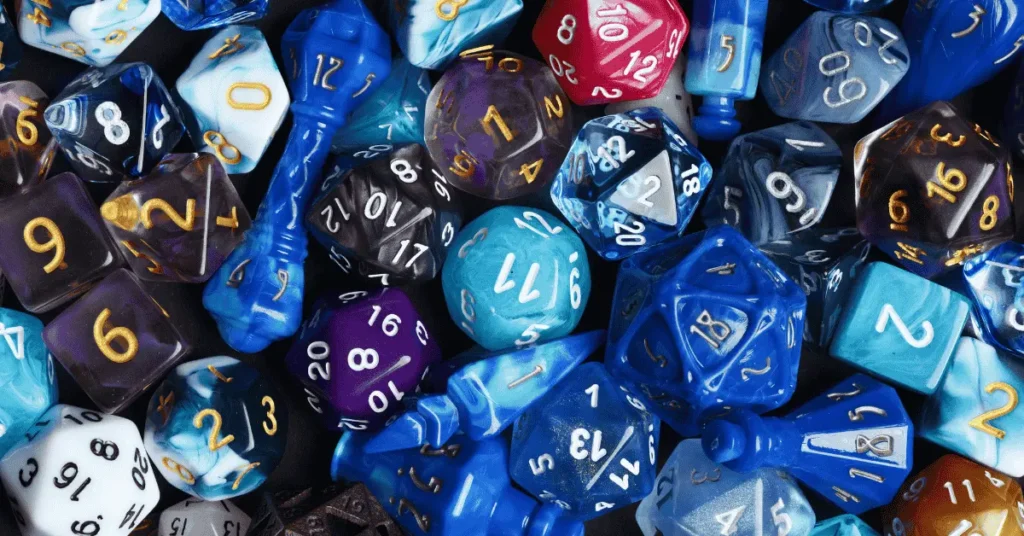When most people think of dice games, a single image often comes to mind: the energetic craps table. However, the universe of dice games is far more expansive and fascinating, encompassing a rich tapestry of cultural origins, unique gameplay mechanics, and varied strategic depths. These games, from ancient pastimes to modern casino staples, demonstrate the enduring appeal of these simple numbered cubes.
This article invites you to explore some of the most prominent dice game variations, highlighting their distinctive features and how they offer different experiences for players seeking both thrilling chance and nuanced strategy.
Craps: The Iconic Casino Roller
Craps stands as arguably the most famous and widely recognized dice game, particularly in Western casinos. It’s an electrifying game that involves players betting on the outcomes of rolls of two dice, often against the house. What makes Craps uniquely engaging is its multi-roll dynamic: a single round can span several rolls, with players trying to “make a point” before rolling a seven.
The game is famous for its lively atmosphere, complex betting layout, and the social interaction among players who often cheer on the “shooter” (the player rolling the dice). It offers a vast array of betting options, some with very low house edges, appealing to those who enjoy a combination of luck, strategy, and community excitement.
Sic Bo: The Ancient Asian Triple Threat
Hailing from ancient China, Sic Bo (meaning “precious dice”) offers a distinctly different dice game experience. Unlike Craps, Sic Bo is played with three dice, and each roll is an independent event, meaning there are no multi-roll sequences. Players place their bets on a large table layout that displays a wide variety of possible outcomes for the three dice.
The simplicity of each roll, combined with a vast array of betting options ranging from low-risk “Big” or “Small” bets (predicting the sum of the dice to be between 11-17 or 4-10, respectively, excluding triples) to high-payout specific triples, makes Sic Bo a fast-paced game of pure chance. Its straightforward nature and diverse betting grid appeal to players who enjoy quick results and varied odds.
Unpacking Unique Gameplay Mechanics
While both Craps and Sic Bo involve dice, their core gameplay mechanics create vastly different player experiences. Understanding these differences is crucial for appreciating the breadth of dice gaming.
The Dynamic Flow of Craps
The gameplay of Craps is characterized by its dynamic, multi-stage flow. A round begins with a “come-out roll,” where a 7 or 11 wins (a “natural”), and a 2, 3, or 12 loses (craps). If any other number (4, 5, 6, 8, 9, 10) is rolled, it becomes the “point,” and the game enters its second phase.
The shooter then continues to roll, aiming to hit the point number again before rolling a 7. This creates a compelling narrative within each round, with bets often staying active over multiple rolls, building suspense and encouraging player interaction as they ride the highs and lows of the shooter’s progress.
The Static, Instantaneous Nature of Sic Bo
In stark contrast to Craps, Sic Bo gameplay is instantaneous and static. Once players have placed their bets on the extensive table layout, the dealer (or a machine) shakes the three dice, and the outcome is revealed immediately. Every roll is a self-contained event; there are no “points” to establish or subsequent rolls to influence a current bet.
This rapid-fire nature makes Sic Bo a game of quick decisions and immediate gratification. Players can place numerous different types of bets on a single roll, covering sums, specific numbers, combinations, or whether the total will be big, small, odd, or even. The focus is purely on predicting the precise outcome of that single throw of the three dice.
Strategic Approaches Across Variations
The distinct mechanics of dice game variations naturally lead to different strategic considerations. What works in one game might be entirely irrelevant in another.
Craps: Navigating Complex Betting and Odds
Strategies in Craps often revolve around understanding the complex betting layout and the varying house edges associated with each wager. Players might focus on “Pass Line” and “Don’t Pass Line” bets, which offer some of the best odds in the casino. More advanced strategies involve “taking odds” (placing additional bets at true odds after a point is established) or utilizing “Place Bets” on specific numbers.
Given the multi-roll nature, managing your bankroll throughout a sequence of rolls is also critical. Strategic Craps play is about making informed decisions on when to bet, what to bet on, and how to manage your chips through the unfolding drama of each round.
Sic Bo: Managing Risk Across Diverse Bets
Sic Bo strategies are less about influencing a sequence of rolls and more about managing risk across the wide array of single-roll bets. Players often combine low-risk, even-money bets like “Big” or “Small” with higher-payout, riskier bets on specific totals or triples.
Understanding the probabilities of each possible outcome and the corresponding payouts is key. While luck plays a significant role, a disciplined approach to betting proportions and an awareness of the inherent odds for each wagering option can help players manage their bankroll effectively over many individual rolls.
Exploring Other Dice Game Horizons
Beyond Craps and Sic Bo, the world of dice games is incredibly rich, offering myriad unique experiences. These variations showcase the versatility and timeless appeal of dice as a gaming tool.
Beyond the Casino: Classic and Modern Dice Games
Many popular dice games exist outside the traditional casino setting, emphasizing social interaction, strategic thinking, or pure casual fun. Games like Yahtzee challenge players to strategically roll and re-roll five dice to achieve specific scoring combinations, combining luck with tactical decision-making in each turn.
Farkle, another popular game, involves players rolling dice to score points, but with the constant risk of “farkling” (rolling no scoring dice and losing all points for that turn). There are also countless simple household dice games that use anywhere from one to five or more dice, highlighting the adaptability of these ancient instruments for pure entertainment.
Cultural Diversity in Dice Gaming
Dice games have a deep-rooted history across cultures, leading to unique variations reflecting local traditions. From ancient Roman games like “Tali” and “Tesserae” to bluffing games like Liar’s Dice (popular in South America) and Asian games like Chuck-a-Luck (a simpler three-dice game similar to Sic Bo), the humble dice have traveled the globe, evolving into diverse forms.
Each variation offers a glimpse into different historical and cultural approaches to chance and strategy, proving that the simple act of rolling dice holds universal appeal and endless possibilities for engaging gameplay.



